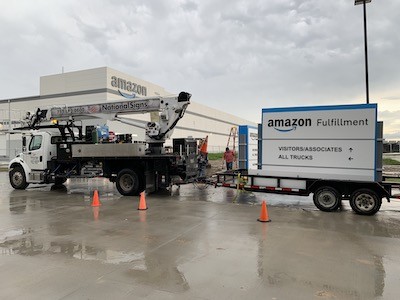When it’s time to design a large-scale sign for your business, you may think there’s not much to it. After all, you’ve probably done just fine with the occasional flyer, invitation, or birthday cake decoration. So you can take those same concepts and just scale them up, right?
Not really.
Designing large-scale signage requires a whole new list of considerations that just don’t apply to something that’s intended to be read from just a few feet away at most. Fortunately, there’s nothing to it that you can’t learn.
Keep the Message Short
One of the most common mistakes beginner designers make is trying to squeeze too much onto their sign. A driver going past at 70 miles per hour isn’t likely to notice that you’ve included your address, phone number, website, Facebook, etc., and they’re certainly not going to have time to read it all.
What they will remember is a short, impactful message. Tell them who you are and what you do in the most compact and clever way you can. We live in the time of smartphones, so your main objective is to get them to remember your name. After that, they can look you up on whatever site suits them best.
Choose the Right Font
If you’ve never designed anything before, choosing a font can be a tedious task. So many of them look the same as you scroll through endless variations of “plain” text until you happen across one that finally stands out. Is it Papyrus? Curlz? Comic Sans? Now is the time to exercise restraint.
Fonts like these may be more interesting to look at on your screen, but it’s unlikely that they belong on your sign. Fancier-looking fonts sacrifice readability for design. You’re much better off choosing one of the plainer options so your message won’t get lost. Take a look at the site you’re reading right now. Someone picked a nice, legible font, and your eyes are probably thankful.
This rule doesn’t apply as much to your logo, however. While your company name should be easy to read, your logo might be more of an expressive piece of art. If that’s the case, you’re limited only by your imagination.
Color Considerations
Contrast is the most crucial consideration when you’re choosing colors for your sign. Some combinations, such as dark red text on a royal blue background, are extremely difficult to read at a distance. Stick with color combinations like bright yellow on black, black on white, and white on black.
Keep in mind that most people have an easier time reading large text if the background is a darker color. There’s a good reason that highway signs are white text against a green background.
You might also want to consider adding a border. Studies show that reading speed increases by about 25% for images with a border around the text. And don’t be too sparing with your color. You can help increase the odds of viewers remembering your sign by adding as little as one extra color in addition to black and white.
Go Big
Since you’re going to tighten up your message to be short and punchy, you’ll have plenty of room to make the few elements you do have stand out. By making everything big and bold, you’ll have a better chance to draw attention and be remembered.
How big does your design need to be? A good rule is that letters need to be an inch high for every ten feet of distance between the sign and the reader, though that’s a little on the low side. So if you want your sign to be readable from 300 feet away, you’ll need letters at least two and a half feet tall.
Hire a Graphic Designer
If all of this is starting to sound like more of a headache than you bargained for, then it’s time to find a professional to help you out. A good graphic designer will work with you to find the right balance of readability and style to convey your message memorably.
Whether you have your own ideas to use as a jumping-off point or you’re coming in with nothing but your logo, your designer will help you draw in customers and look good doing it.
National Signs Has You Covered
Our team at National Signs includes graphic designers who specialize in large-scale signage. So bring us your ideas, and let us get started on your next project. If you’re a bit light on ideas, why not take a look at our gallery for some inspiration?
We’re looking forward to working with you!




